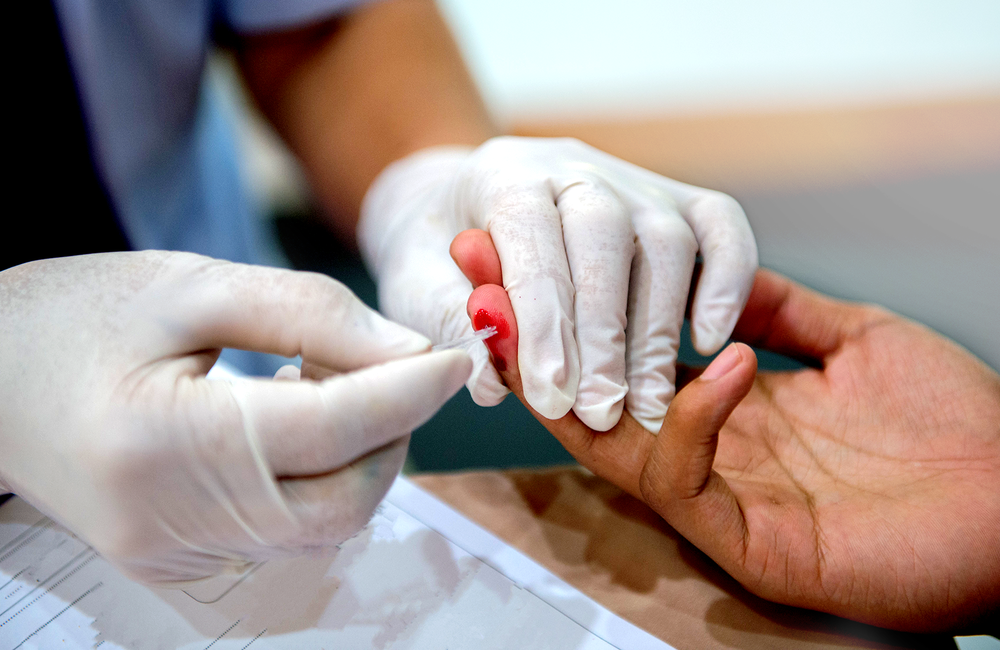
Almost half of HIV diagnoses in Europe are among people whose immune systems have already been seriously weakened by HIV, an international team of investigators report in BMC Infectious Diseases. Just under half a million people, half of them in Russia, are estimated to have received a late HIV diagnosis between 2010 and 2016.
Late diagnosis was associated with a ninefold increase in incidence of developing an AIDS-defining illness or dying within the first 12 months after HIV diagnosis. The investigators emphasised that these events may well have been preventable with prompt diagnosis and treatment.
The researchers wanted to get a clearer understanding of the proportion of people newly diagnosed with HIV in Europe who are diagnosed late and the impact of delayed diagnosis on health in the following year. They therefore studied the characteristics of people newly diagnosed with HIV enrolled in two large cohorts (EuroSIDA and COHERE) between 2010 and 2016, including the proportion diagnosed with a CD4 cell count below 350 or an AIDS-defining illness.
As the cohorts did not include all patients in a country, the researchers then looked at total numbers of HIV diagnoses made. Making the assumption that rates of late diagnosis were the same in the cohort and in the wider population, they estimated the number of people with a late HIV diagnosis in western, central and eastern Europe.
A total of 39,204 people newly diagnosed with HIV were included in the study. Average CD4 cell count at the time of diagnosis was 365 cells – just above the threshold for late diagnosis. Consistent with this finding, almost half (48%) of people enrolled in the cohorts were diagnosed late.
The vast majority of patients in the cohorts were living in 13 western European countries (38,511 people). In the whole of western Europe, around 211,000 people were diagnosed with HIV in 2010-2016. If the same rate of late diagnosis (48%) observed in the cohort applies to the wider western European region, just over 102,000 people will have had a late HIV diagnosis.
"Just under half a million people, half of them in Russia, are estimated to have received a late HIV diagnosis between 2010 and 2016."
The cohorts also included 514 newly diagnosed patients in four eastern European countries (Belarus, Estonia, Russia and Ukraine). Given the very large number of HIV diagnoses made in the whole of eastern Europe (786,000) and the observed rate of late diagnosis in this region in the cohort (47%), over 370,000 people were estimated to be diagnosed late in the study period. This includes 249,000 in Russia alone.
For central Europe, only 179 newly diagnosed patients were included from Poland. Given 32,000 diagnoses in the region and the elevated rate of late diagnosis observed (64%), the researchers estimated 20,000 late diagnoses in the whole region.
The study also showed that late diagnosis could have serious medical implications. Data from western Europe showed that among people who were diagnosed promptly, 0.4% developed AIDS or died in the first year after diagnosis, rising to 5.1% among those who were diagnosed late.
While sufficient data were lacking for central and eastern Europe, the authors extrapolated from the western European figures to estimate the number of AIDS cases and deaths per one million inhabitants that were due to late diagnosis of HIV. This analysis took into account differences in population size and HIV diagnoses between countries. The highest numbers were in Russia (72 AIDS cases or deaths per million), Ukraine (57 per million), Estonia (36 per million) and Belgium (22 per million). The lowest were in Germany, Switzerland, Denmark, Poland and Sweden (all below 5 per million).
“We found that late presentation remains a significant problem across Europe and translates into a substantial burden of morbidity and mortality, which could potentially be avoided with earlier diagnosis and treatment for HIV,” conclude the researchers. “An innovative and holistic approach spanning the HIV prevention, diagnosis, treatment and care continuum is needed to reduce the burden of HIV-related morbidity and mortality, which is potentially avoidable if people access timely antiretroviral therapy.”
The Late Presentation Working Groups in EuroSIDA and COHERE. Estimating the burden of late presentation and its attributable morbidity and mortality across Europe 2010-2016. BMC Infectious Diseases 20: 738, 2020 (open access).
